RAW Nutrition is quickly gaining momentum in the sports nutrition industry and for a good reason. Co-founders, Matt Jansen and Domenic Iacovone, have done an incredible job formulating top-tier supplements that help optimize performance, recovery, and achieve fitness goals. Not to mention, all of RAW Nutrition's supplements are certified drug free by the Banned Substance Control Group (BSCG). RAW Nutrition also sponsors elite athletes, such as IFBB Pro Nick Walker, who just earned his pro-card at the NPC North American Championships in September 2020.
RAW Nutrition launched July 2020 and since that time they've been focusing on growing their team, reach, and supplement line. So far, we've covered RAW Pump, RAW Protein, RAW Vegan Protein, RAW Burn, and RAW Intra on the PricePlow Blog. But there's another supplement in RAW Nutrition's lineup that we definitely don't want to miss — RAW Nutrition EAA.
If you've been around the supplement industry for more than a few months, it's likely you've heard of amino acids, branched-chain amino acids (BCAAS), and essential amino acids (EAAs). But what's the difference between BCAAs and EAAs? And is one better than the other? If you're confused, don't worry because, in this article, we're going to explain everything you need to know about the different amino acids.
Why RAW EAA Uses All Nine Essential Amino Acids
A few years ago, when the industry was dominated by supplements formulated with BCAAs, it was rare to see a full-spectrum EAA product on the market. Since that time, though, several studies have come out suggesting that EAAs have an edge on BCAAs when it comes to recovery, activating muscle protein synthesis (MPS), and preventing excessive muscle protein breakdown.[1] The research discussed below explains why.
It turns out that although BCAAs can jump-start MPS, they need the other essential amino acids to keep everything running. Branched-chain amino acids are made up of three essential amino acids: leucine, isoleucine, and valine. The body cannot produce these compounds endogenously, therefore they must be supplied by the diet.
If you want to learn more about the differences between EAAs and BCAAs, check out this article: EAA is the New BCAA: Essential Amino Acids Stage a Coup.
There are a total of nine essential amino acids, including the three we just mentioned. . Instead of formulating a product that only contained BCAAs, RAW Nutrition decided to maximize results by providing all nine essential amino acids, hence the name RAW EAA.
Keep reading to learn more about what RAW EAA has to offer and sign up for RAW Nutrition news and deal alerts, plus product reviews, and launch notifications.
RAW Nutrition RAW EAA – Deals and Price Drop Alerts
Get Price Alerts
No spam, no scams.
Disclosure: PricePlow relies on pricing from stores with which we have a business relationship. We work hard to keep pricing current, but you may find a better offer.
Posts are sponsored in part by the retailers and/or brands listed on this page.
This area is reserved for Team PricePlow's upcoming Product Review video.
Subscribe to our channel and sign up for notifications so you catch it when it goes live!
The Ultimate Peri-Workout Stack
RAW EAA can be taken pre-workout, intra-workout, and even post-workout. However, for best results, RAW Nutrition suggests mixing one serving of RAW EAA with 8 to 12 ounces of cold water and consuming 20 to 30 minutes prior to training. You can also take RAW EAA alongside RAW Intra-Workout during your training session to promote muscle protein synthesis and negate excessive muscle protein breakdown. Since RAW EAA doesn't contain any stimulants, it won't affect your sleep if you take it later in the day.
RAW EAA Ingredient Analysis
Here's what one scoop (~12g) of RAW EAA provides:
-
L-Leucine - 3g
Amino acids are the building blocks of protein, which is why they're crucial for building muscle. The body is constantly alternating between muscle protein breakdown and muscle protein synthesis. For example, when you hit the gym, lifting heavy weights accelerates muscle protein breakdown. But consuming enough protein around training and taking essential amino acids is beneficial because it counteracts that process.
Although all nine essential amino acids are important for optimizing muscle protein synthesis, some would argue that leucine is king. Leucine is one of the three branched-chain amino acids and it's considered to be the primary stimulator of MPS. Leucine can turn on MPS by activating a protein called mTOR (mammalian target of rapamycin), which carries out its effects via the S6K pathway.[2,3]
In order to maximally stimulate MPS, it's recommended to consume at least 2 to 3 grams of leucine. With every serving of RAW EAA, you get just the right amount.[3]
-
L-Isoleucine - 1g
L-isoleucine is another branched-chain amino acid and it shares a similar chemical structure with leucine, which is where it gets its name. Isoleucine may not stimulate MPS to the same extent as leucine, however, it still plays a key role in the muscle-building process.
A study published in the journal Biochemical and Biophysical Research Communications found that isoleucine is also involved in the uptake of glucose into skeletal muscle cells, which can help increase glycogen replenishment, promote recovery, control blood sugar levels, and provide users with a quick energy source during training.[4]
-
L-Valine - 1g
L-valine is the last essential amino acid that's also classified as a branched-chain amino acid. Even though there's not a ton of research available on L-valine, a preliminary study from the Journal of Bioscience, Biotechnology, and Biochemistry has shown that in isolation, L-valine contributes to the formation of glycogen.[5]
This is advantageous for exercise performance and recovery because the body stores glucose as glycogen in the muscles and liver and then uses the glycogen as an energy source and to maintain appropriate blood sugar levels. Since exercise results in the depletion of glycogen, it's important to restore glycogen stores post-training.
L-valine metabolism produces β-aminoisobutyric acid (BAIBA), a non-protein amino acid. Research shows that during exercise, skeletal muscle secretes BAIBA.
Preliminary studies have shown that BAIBA contributes to healthy body weight, bone health, and insulin sensitivity.[6]
If you want to learn more about BAIBA, check out this in-depth blog post: BAIBA: New Weight Loss Ingredient Generates Exercise in a Pill?!
-
L-Phenylalanine - 1g
L-phenylalanine is an amino acid that's less involved in muscle protein synthesis, but instead, contributes to the production of multiple neurotransmitters, including epinephrine, norepinephrine, and dopamine.[7]
Neurotransmitters are essential for cell-to-cell communication and carry out various physiological processes. For example, both norepinephrine and epinephrine are involved in the sympathetic nervous system (SNS), which is responsible for the "fight or flight response." The SNS is highly active during exercise and causes the heart rate to elevate, it slows digestion, increases blood flow — especially to the extremities — and prepares the body for movement by enhancing both lipolysis and glycogenolysis.
The other neurotransmitter, dopamine, contributes to motivation, mood, sense of pleasure, motor control, and overall sense of well-being. Prolonged bouts of exercise can deplete neurotransmitter levels, leading to fatigue. Adding an L-phenylalanine pre-workout to one's supplement regimen can help delay this response.
A study published by the Journal of the International Society of Sports Medicine showed that during exercise, L-phenylalanine can enhance glucagon secretion from the pancreas, which results in greater fatty acid mobilization and oxidation.[8]
-
L-Lysine - 1g
In addition to promoting muscle protein synthesis, L-lysine supports collagen production and has positive effects on the immune system and specific organs.[9] It's theorized that L-lysine could help reduce the risk of getting injured or sick, which means fewer sick days and less time-off at the gym.
Furthermore, L-lysine is utilized to form carnitine, a transporter molecule that's required for fatty acid oxidation (fat burning). And if your goal is to lose fat, then this attribute may help speed up the process.[9] Essentially, L-lysine helps retain muscle mass and burn fat, a goal that nearly every gym-goer works toward.
-
L-Threonine - 1g
L-threonine is crucial for the production of two non-essential amino acids, glycine, and serine. Both are heavily involved in muscle growth and collagen production. Collagen is the main structural component of connective tissues, like ligaments, articular cartilage, skin, and tendons. So insufficient L-threonine intake may increase the risk of injury,
It turns out that muscles are not the only thing that needs some extra resources to properly repair and recover from exercise. Connective tissue will likely be much weaker with a low intake of L-threonine.
Other research published by the Journal of Animal Science and Biotechnology shows that L-threonine is readily absorbed in the digestive tract where it's used to create a glycoprotein called mucin, which helps protect the intestinal lining.[10]
Study authors suggest that L-threonine may help support the immune system since the gut plays a crucial role in identifying foreign invaders and preventing them from entering circulation. Lastly, L-threonine is involved in lipid metabolism along with methionine and aspartic acid and helps support proper liver function.[10]
-
L-Methionine - 500mg
The unique attribute that L-methionine brings to the table is that it's one of the few sulfur-containing amino acids.
Sulfur is the third most abundant mineral in the human body. It promotes skin health and the synthesis of several key protein molecules and metabolic intermediates, such as glutathione.[11] Only two out of the 20 amino acids that have been identified contain sulfur. So it's crucial to consume enough methionine every day in order to get a sufficient amount of sulfur.
In addition to providing the body with sulfur, L-methionine metabolism results in the production of a powerful methyl donor called S-adenosylmethionine (SAMe).[12] Studies have shown that SAMe protects cells from oxidative stress and promotes tissue healing by acting as an antioxidant and reducing levels of homocysteine.[12] Lastly, methionine contributes to the formation of key amino acids like creatine, taurine, and cysteine.[13]
-
L-Histidine - 300mg
Along with beta-alanine, L-histidine is primarily used to create carnosine, a dipeptide molecule that helps boost performance by buffering lactic acid in skeletal muscle.[14] One of the main reasons why your fatigue is because the body fails to keep up with the energy demand.
There are various energy systems that contribute to adenosine triphosphate (ATP) production, however, a lack of oxygen delivery to contracting skeletal muscle results in the formation of lactic acid and that causes a drop in pH levels.
If you've ever performed a maximal exercise and felt a burn in a specific muscle, you can blame it on lactic acid build-up. Although this phenomenon is inevitable, having greater levels of carnosine can delay onset by decreasing the accumulation of lactic acid.[14]
This is why many pre-workouts include beta-alanine. The hope is that it will boost muscular endurance by increasing carnosine levels.[14] However, beta-alanine needs a good amount of L-histidine to carry out its performance-enhancing effects. Fortunately, stacking RAW EAA and RAW Pump covers both beta-alanine and histidine.
-
L-Tryptophan - 300mg
The final essential amino acid is L-tryptophan. The dose is rather low, but for a good reason. When most people think of L-tryptophan, they think about sleeping, not smashing the weights.
L-tryptophan is a precursor to serotonin, a monoamine neurotransmitter that's responsible for regulating sleep, mood, digestion, memory, and appetite. Serotonin can be converted into melatonin, which is a primary hormone for controlling the sleep-wake cycle.[15]
L-tryptophan is also used for the synthesis of a variety of key molecules in the body, including proteins, kynurenine, tryptamine, NAD/NADP, and niacin.[15] Just 300 milligrams of the hormone are not enough to cause drowsiness and it will likely help due to the other roles it plays.
-
Electrolytes
To support adequate hydration, RAW EAA includes the following electrolytes:
-
Phosphorous (as Disodium Phosphate) - 126mg (10% DV)
-
Sodium (as Disodium Phosphate) - 192mg (8% DV)
-
RAW EAA Flavors
RAW Nutrition purposefully flavored RAW EAA to easily stack with their other supplements. For example, RAW EAA and RAW Pump come in pineapple and watermelon, so you combine them without clashing flavor profiles.
Here's an updated list of all RAW EAA available flavors:
Raw Nutrition Proves They Have What it Takes
PricePlow has been an active observer of the supplement industry for years and we've witnessed countless new brands pop Not many have proven they have what it takes to be successful. Ever since PricePlow found out that Matt and Domenic, also co-founders of Revive MD, were teaming up to form another supplement company, we were confident they would make a huge impact in a short amount of time.
After launching RAW Nutrition with seven different products and multiple flavors, they quickly showed the supplement industry that RAW would be here to stay. On top of that, a few weeks after their initial release of products, RAW Nutrition introduced another supplement to their already comprehensive line, called PUMP2.
RAW already has a well-formulated, stimulant-free pre-workout called RAW Pump, which delivers massive pumps and focus. But just in case you want to kick things up a notch, adding a scoop of PUMP2 provides an extra 6 grams of GlycerSize, a trademarked form of glycerol.
Separating glycerol from RAW Pump is a smart move because glycerol is known for causing entire tubs of powder to clump. This shows that RAW Nutrition is thinking ahead. And they have several more supplements in the works. They aren't slowing down anytime soon, so make sure to subscribe below for more RAW Nutrition news, deals, reviews, and interviews from PricePlow.
RAW Nutrition RAW EAA – Deals and Price Drop Alerts
Get Price Alerts
No spam, no scams.
Disclosure: PricePlow relies on pricing from stores with which we have a business relationship. We work hard to keep pricing current, but you may find a better offer.
Posts are sponsored in part by the retailers and/or brands listed on this page.
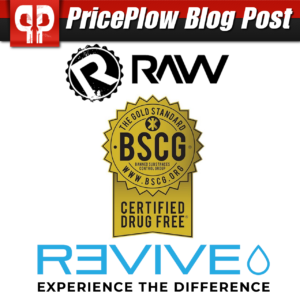
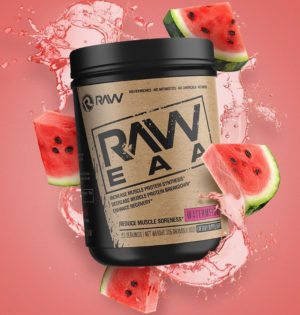
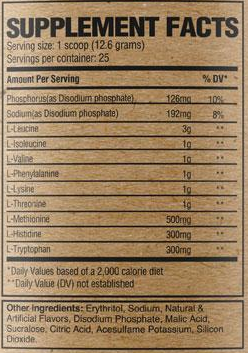
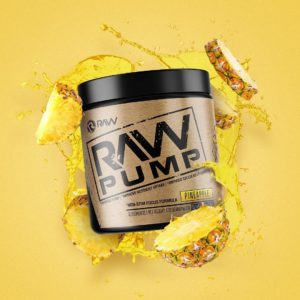
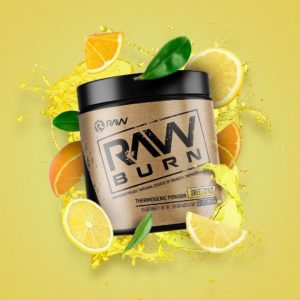

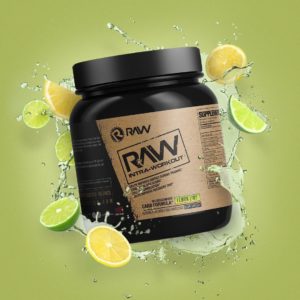



Comments and Discussion (Powered by the PricePlow Forum)